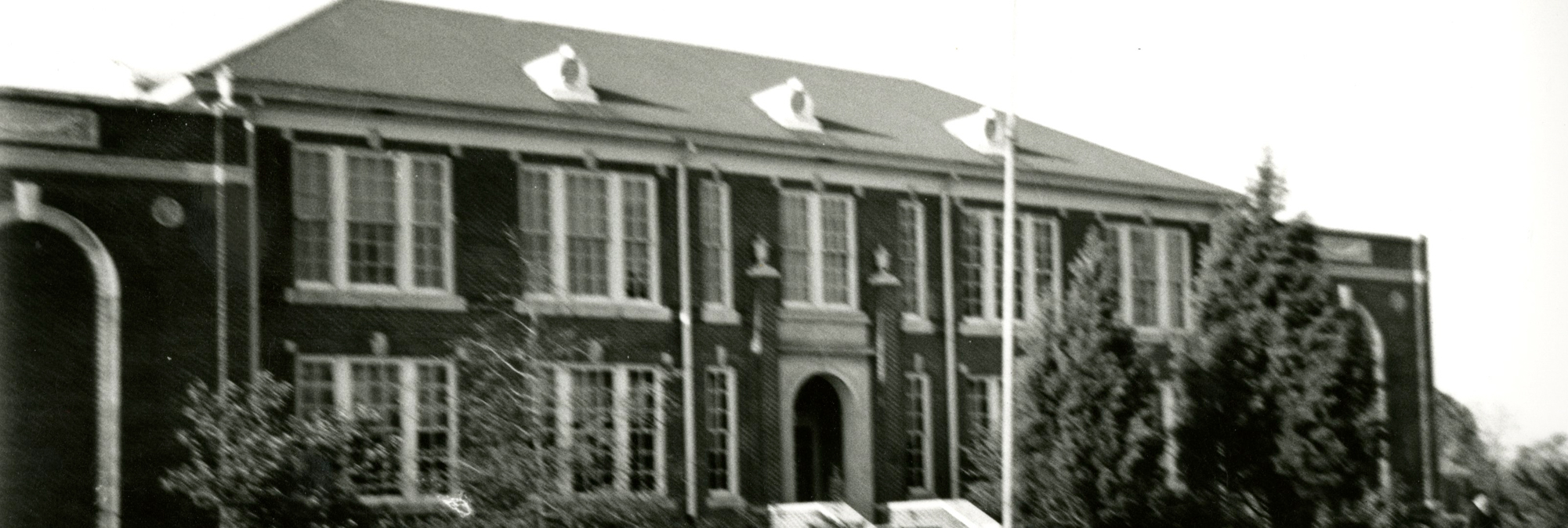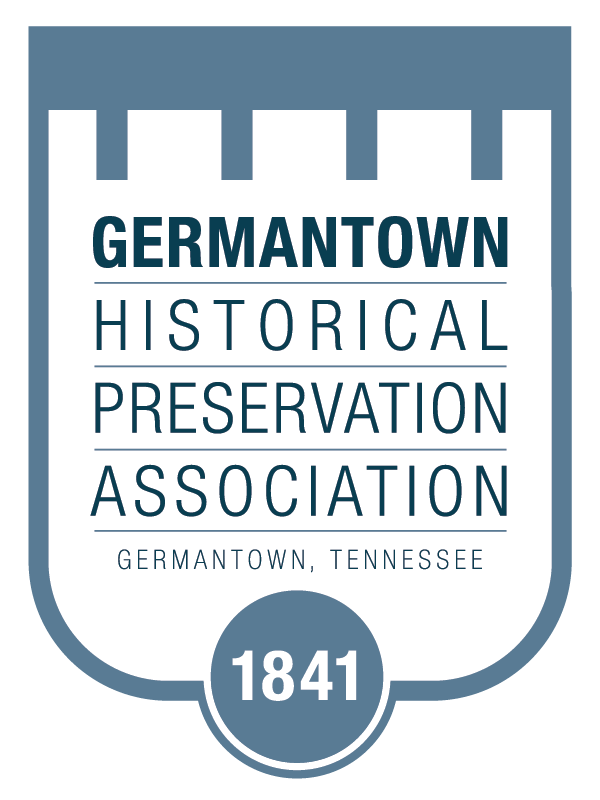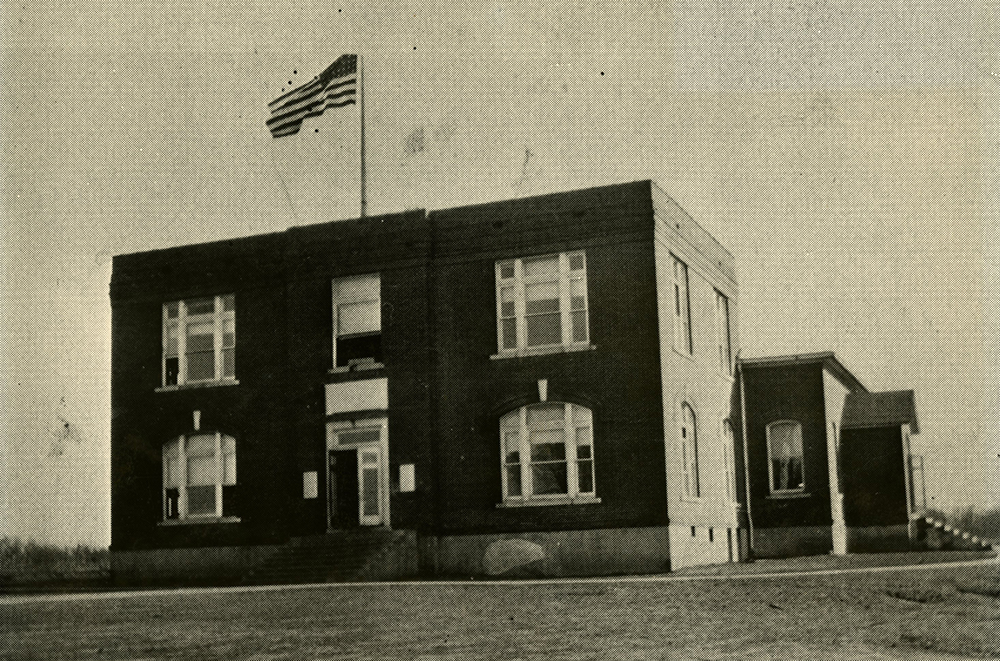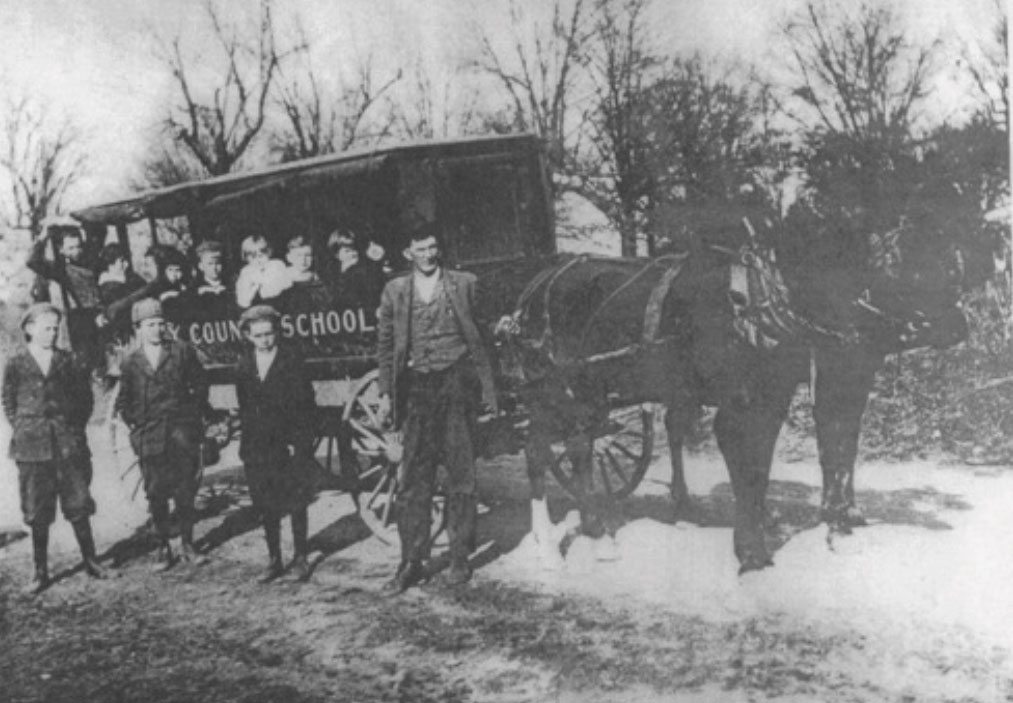
Attending School in the 1920s
By Lorraine A. Smith
Germantown News, May 1, 1986
Back in the 1920s, M.C. Williams School consisted of only one red brick building standing on the present site of the Administration Building of Germantown High School. It was a huge, imposing building rising two stories high. I was impressed with its massiveness and by its description as “a consolidated school.” I was too young to know what “consolidated” meant, but it sounded important, and I w proud to attend such a school. I was equally proud that my siblings and I were important enough that the Shelby County School System extended its bus line all the way to what is now known as Yates Avenue in Memphis so we could attend the Germantown school.
On a typical morning, the first one dressed and ready to leave, stood to watch at a front window to warn the rest of us of the approaching wagonette. “Wagonette,” yelled Marjorie, who usually finished her morning chores first and was ready, as all of us should have been. Immediately after her warning, there was a mad scramble for books and with coats and caps half on, half off, we resembled frightened chickens, stringing out, one by one, across the deep lawn. Every morning we were fearful the last one out of the front door might be left behind. But Mrs. Scruggs, the driver, always waited for the last straggler, who usually was Lloyd with Mother jogging beside him, buttoning his coat under his chin.
A wagonette, according to Webster’s dictionary is “a light, open, four-wheeled carriage with two seats set lengthwise facing each other behind the driver’s seat.” Can you imagine Shelby County school children riding to school today in a vehicle such as this? Open carriage!
Our seats were wooden benches on each side of the vehicle, and we leaned back on a couple of two-inch boards nailed to uprights on the rear corners of the wagonette. There was a third bench placed in the center of the carriage, and the hapless passengers that drew this seat had nothing to lean upon and found it necessary to sit hunched forward to brace against the lurch of the wagonette.
There was a roll of tarpaulin attached to the roof on each side of the wagonette so that, when it rained, they could be lowered to keep us from getting wt. When the rain came, Mrs. Scruggs would stop the wagonette, and the large boys would unfasten the restraining ropes to let the tarpaulin drop-down, then they jumped out to fasten down the canvas on the outside. Only occasionally did someone get damp. These canvas “walls” offered the only protection we had from wintry temperatures, too. Since there was no heat in the wagonette, we huddled together, shivering until we reached school, but we soon thawed as we crowded around the huge steam radiators.
I can’t remember losing a single “snow day’ from school. Maybe our weather was different then. Or maybe it was because there was no TV with pleasant broadcasters “psyching us out” with their welcome announcement, “Shelby County Schools are closed today because of snow!” We went about the business of getting educated without electronic interference.
Getting an education in the good old days is another topic altogether, but it was a wonderful three years I spent in the Germantown School.




